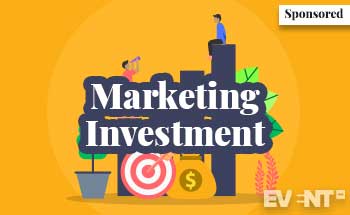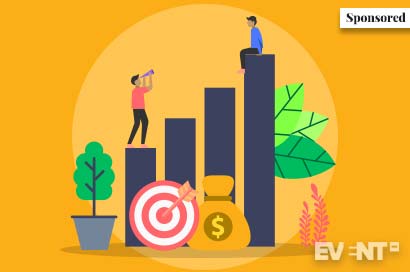Skift Take
Events, conferences, and trade shows are huge investments for businesses that can have a significant impact on business opportunities and revenue growth. However, with the expense of sponsorship, travel, setup, sales resources, and dynamic/engaging booths, it’s imperative that you do all you can to maximize the return on your investment – especially when you have to justify events as opposed to easier, less expensive sales and marketing channels online.


If events were not lucrative opportunities, there would be no need to organize them. Meetings with other businesses and users at these events do not just increase sales; according to a report by Meetings Mean Business, they are also the most effective marketing channel for driving key business objectives. Today, nearly half of all brands realize a 300%-500% ROI with event meetings and experiences.
With so much potential and the stakes being what they are, businesses attending these events need to focus their attention on making productive contacts and forming lasting connections. In this post, we’re going to show you why you should invest in events and just how to make the most of that investment.
Events As An Effective Marketing Campaign
As effective as online marketing and meetings are, there can be a sense of depersonalization; a loss of that human touch. Millennials prefer events and see them as an opportunity to make meaningful connections in person. Successful brands know this and actively take advantage of events to reap maximum benefits.
Live events are an excellent platform for not only getting your values across but also for conveying your company narrative; you can discuss your values and objectives personally in a way that an ‘About Us’ page simply cannot. Events are also the perfect venue for expressing your messages creatively and offering physical, real-time engagement with your brand and products.


If the event is a good fit, the high concentrations of customers and qualified prospects offer an unparalleled opportunity to meet them face-to-face, have them talk to your company experts about their challenges, and show them how to solve those challenges with meetings, demos, trials, promos, etc.
19% of buyers prefer to meet with a salesperson during the awareness stage of the buying process and 60% want to connect with company experts during the consideration stage once a shortlist has been produced. Events let you fast-track through both stages for a targeted segment of warm leads while giving the nearly 80% of those leads who ultimately want to talk to you direct access to your sales team.
Events Are A More Personal Business To Business Approach
Substantiating your event ROI involves not only comparing the cost of the event to the value it brings in and of itself, but also comparing it to the relative ROI of alternatives like online meetings.
There are a number of factors to consider, from the monetary value delivered to many stakeholders to less directly quantifiable metrics that nevertheless have an impact on your sales and marketing goals. Here are a few of the unique advantages of live events:
Focus. One advantage is the incentive for everyone there to make the most productive use of their time. Removing screens makes it easier to have personal interactions and focussed discussions. There is less noise, meaning that you are able to give leads your full attention.
Trust. Sales are about connections, relationships, partnerships. Trust in the brand and service are essential. Having a human touch reassures customers that they are not just giving money to a faceless corporation. In conversation, a customer or lead can put a face to the companies that they want to do business with. This is especially important within a B2B context, where support and a main point of contact are linchpins of a long and happy partnership.
Strong Impressions. In-person customer engagements are a chance for businesses to introduce themselves and present a professional and competent face to key prospects. Events can allow you to better convey your solutions, brand promise and personality, especially if you’re a small-to-medium sized business competing for larger contracts.
Dialogue. For important contacts, live events offer the chance to have a real-time, in-depth conversations – a dialogue around their biggest challenges and a demonstration of how, specifically, you can help to solve them.


Events Are Increasingly Tangible
The next question is how to measure these advantages of in-person meetings. Events represent huge potential, but with such a high investment and so many stakeholders, the accountability expectations are high for both event professionals and senior executives.
While there are a number of tried and tested methods of gathering useful event data, event technology has evolved in response to the demand for hard data. Now, event engagement is largely funneled through event apps and other tech, and supporting analytics are essential.
Unfortunately, most of the booth traffic and gamified crowd pulling ends up generating a large number of worthless leads or are underutilized assets. It is a well-understood fact that more than 95% of leads from events do not convert into real business value. This is where B2B meetings come to bat, as they can be pre-scheduled with prospects or customers, assuming special significance when the representatives of an enterprise (CXOs, subject matter experts, etc.) are involved in key discussions and drive tangible ROI.


Meeting Automation: How to Get the Best Out of Your Event
Another leading trend defining events is meeting automation. Most mid and large companies have realized that events are the hub of B2B meetings and they need automation to increase the number and the quality of these customer engagements. These meetings are the leading indicator of the sales pipeline, which is a more tangible outcome from event and helps justify the spend.
What Exactly Are ‘Meeting Automation Platforms’?
Event planners and senior executives put a lot of effort into meeting scheduling and management, but manual processes are usually error-prone and deliver a less than optimal outcome. However, events and meetings are tough to manage alongside everything else that comes with attending an event. Fortunately, there is a simpler way of doing things.
Meeting automation platforms, also known as MAPs, are platforms that are designed to do critical tasks, such as meeting scheduling and tracking, and provide real-time statistics for you to analyze. Being able to schedule, manage, and analyze meetings with a few clicks means that you can focus on being present in meetings and getting the most out of your time. No more relying on misplaced and disorganized notes and information – meeting automation systems keep everything in one place.
Using a MAP allows you to change the way you plan for meetings and events. These systems have been able to reduce the manual work that goes into meeting planning by up to 80 percent. So, instead of focusing all your attention on the process, it lets you spend time on what’s really important – the meeting.
Automation Means Better Reporting on Key Areas
In the past, detailed analytics reporting on key areas was almost impossible to attain; now they are loaded into the technology we use to handle almost every interaction.
As an example, meeting scheduling and management software is emerging to satisfy the need for streamlined processes and enhanced accountability. Platforms such as Jifflenow automate the customer meeting workflow and integrate with registration solutions and event apps to offer a deeper level of reporting and increased data-driven analysis.
Meetings are a hive of information. Analyzing meetings can tell you a lot you need to know about the efficiency of marketing and sales teams and if the efforts taken towards closing the deal was worth it or not. Just keeping track of the number of meetings is an incomplete view. Metrics are a necessity to measure the impact of meetings and influenced revenue. Since these meetings are intricately interlocked with returns, the method for boosting the Event ROI hinges on the meeting metrics. Because what can be measured can be improved.
For CMOs and senior executives, it is easier than ever to collect and process leads and analyze post-show ROI thanks to modern lead capture tech. B2B meetings are a key element in driving sales pipeline and revenue, but it can be difficult to organize meetings and prove their efficiency. Platforms and technology like this make justifying investment in events and providing accurate ROI reports simple and effective.


Automation Means Scalability
Events are more scalable thanks to automation. The whole point of automation is to allow event professionals to do more faster (and with better security and data integrity).
While it is possible to organize a few meetings with manual processes and legacy tools, the events themselves often entail organizing 100s or even 1000s of meetings with customers and prospects. Performing routine and repetitive tasks with the support of automation allows event managers to scale their efforts greatly with only a small increase in their own effort. Processing the information for one lead or attendee can be done with the same number of clicks/actions as processing 1000s.
By automating mundane and repetitive tasks, you can deliver better attendee experiences and improved outcomes. Event planners who leverage MAPs and other automations can focus on the creative and human side of planning. Being supported by an automated process allows you more rest, freedom, and time to do what you do best without distractions.
The same thing is true of sales staff, experts, and executives attending these events. Meeting automation makes scheduling, managing, and tracking meetings easy and secure, allowing them to focus on quality discussion, long-lasting connections, and maximum rewards.
Automation Means Better Data Security, Compliance and Integrity
Meeting automation also drives more secure meetings and more compliance with strict privacy and security regulations. Emails and spreadsheets just aren’t the most reliable tools when it comes to business-sensitive data. There are high opportunity costs in case of errors, and with the GDPR rules, you can run into problems with using email. With less manual record-keeping and task management, the same tasks can be accomplished by fewer people with higher security-level clearance.
Moreover, with data flowing from system to system without manual input, data managers need only be concerned with the integrity of the source data, and don’t run the risk of corrupting it as they reproduce it in various places manually.


Automation Means Better ROI
Automation takes the guesswork out of measuring statistics, meaning that you can make better business decisions. A meeting automation platform can provide far more granular insights on areas such as the number of invites accepted, average deal sizes, the number of meetings per deal closed and more. This kind of data is invaluable when evaluating the success of event participation and establishing ROI. Lead and conversion metrics are available to help you decide which events to invest in for the future.
With automation platforms such as Jifflenow, you can delve deep into real-time metrics and measure the success rate of various demos, salesperson leaderboards, meeting room utilization, and more. This allows you to AB test and adapt your approach accordingly. Straightforward and accurate engagement metrics tell you which live experience investments yielded the best results allowing for future improvement.
How Can You Incorporate MAPs Into Your Next Event?
Now that we have discussed the benefits of MAPs, you may be tempted to try them for yourself. Here are a few tips to help you get the most out of your MAP:
-
BEFORE THE EVENT
- Take stock of who is attending the event, and use your MAP to schedule and organize your meetings. Some MAPs can even predict what kind of attendees will be at the event, giving you the chance to cater to certain demographics.
- With a clear picture of who is attending, you will be more confident in who may be a lead and who to target during the event.
-
DURING THE EVENT
- Keep track of your bookings. MAPs are designed to ensure that everyone from sales reps to executives knows where to go and that no rooms will be double-booked.
- Know instantly when meetings have occurred and review notes in real-time.
- Need to make a last-minute adjustment? MAPs are flexible and meetings can be changed as needed.
-
AFTER THE EVENT
- Track in-depth metrics and analyze what aspects were most and least effective.
- Easily evaluate your bottom line and see how you maximized your ROI.
- Strengthen team accountability thanks to the transparent data available.
- Compare your performance over time and see how much you grow.
IN CONCLUSION
With events being such important opportunities for businesses and carrying often very high stakes, it is imperative that every meeting justifies your investment in the event. Meeting customers and other businesses drives the sales pipeline and can lead to long-term relationships. However, it is difficult to track your success in real-time in the time between meetings during hectic events.
Meeting automation systems take the guesswork out of analyses by taking on menial tasks, helping you manage the event, and giving you accurate and detailed data for you to take and adapt in the future. Planning and marketing an event is already hard enough; having the support of a quality system can take some weight off of your shoulders.
Click here to learn more marketing automations to improve your event ROI.






